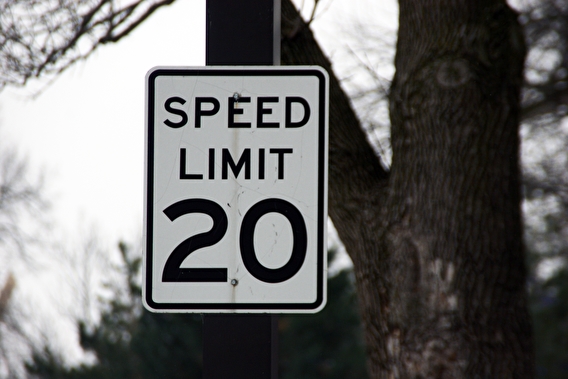
A before-and-after study of speed changes in one Minnesota city shows that changing posted speed limits may not—at least initially—cause drivers to slow down. This new finding is important for Minnesota’s state and local transportation agencies as they continuously search for the most effective ways to reduce unsafe speeds and meet their Toward Zero Deaths safety goals.
“We know that physical modifications to a roadway such as speed humps, or strict police enforcement of speed limits, can reduce driving speeds, but the effectiveness of simply changing a speed limit is open to question,” says Gary Davis, a professor in the Department of Civil, Environmental, and Geo- Engineering.
Davis led a team that studied the effect of speed limit changes on vehicle speeds—absent other changes in the roadway environment—to help inform local speed limit policies and practices. The project was sponsored by the Minnesota Local Road Research Board (LRRB) and MnDOT.
New Minnesota legislation regarding local speed limits made this investigation possible. Before 2019, speed limits on urban roads were set at 25 or 30 mph, but the new law allows cities to establish lower limits on certain streets without special approval. The LRRB saw the opportunity to use this change as a natural experiment that could improve understanding about the impacts of urban speed limit changes on driving speeds.
Researchers began by surveying Minnesota cities to determine whether they were planning speed limit changes, and the City of St. Louis Park agreed to participate in a before-and-after evaluation of driver speeds.
Next, they selected more than 20 two-lane, two-way roads to study; most were scheduled for speed reductions, while some without planned speed limit changes would serve as comparison sites. Researchers measured the speeds on the roads two to four months prior to the speed limit changes and again six to eight months after the new speed limits were posted. They then calculated the mean speeds for each site and quantified any difference in speeds before and after the posted speed limit changes.
“This analysis showed drivers may not respond immediately to a posted speed limit change,” Davis says, “but it’s a good start to a longer-term evaluation to see if the speed control policy objectives will be met.”
The findings showed that on average, speeds were just 1 to 2 mph lower after the speed limit reduction, both on streets where the speed limit was lowered and on streets where the limit was unchanged.
There was also considerable variability in the driving speeds before and after the speed limit changes. Mean speed changes ranged from a 7 mph decrease to a 2.4 mph increase, and speed variances increased slightly after the speed limit changes.
“This study took advantage of a unique opportunity to evaluate the impact of the new municipal speed limit authority in Minnesota,” says Victor Lund, traffic engineer with St. Louis County Public Works and the project’s technical liaison. “The results suggest that merely changing the posted speed limit may not effect a wholesale reduction in vehicle speeds. Rather, it still appears that good speed limit policy should reflect a roadway’s context and geometry.”
In the future, this research may help build an even better understanding of how driving speeds respond to speed limit changes. Researchers say the study could be repeated in a few years to help determine if driving habits change and if speeds eventually decrease closer to the posted speed limit.
—Megan Tsai, contributing writer


